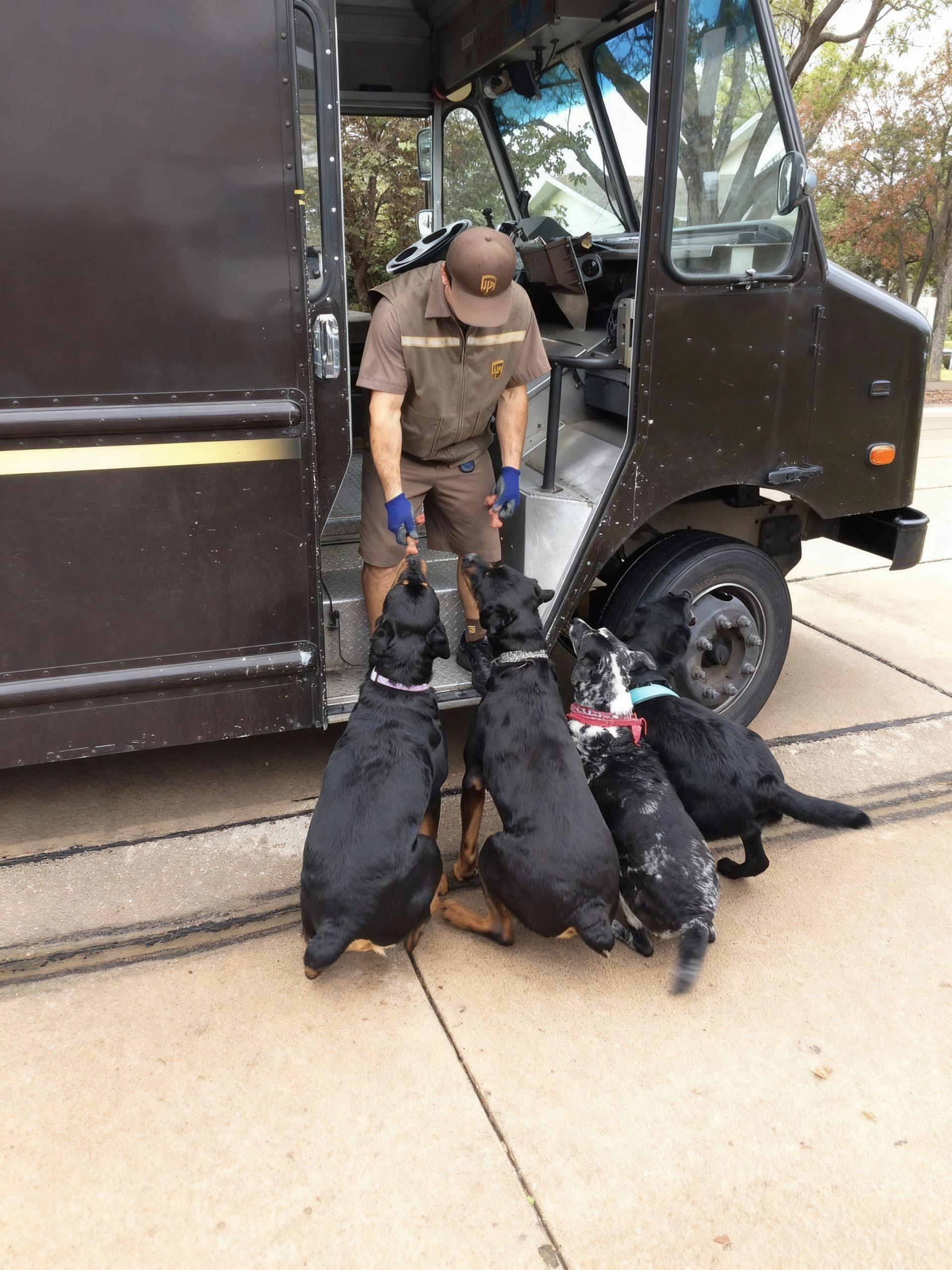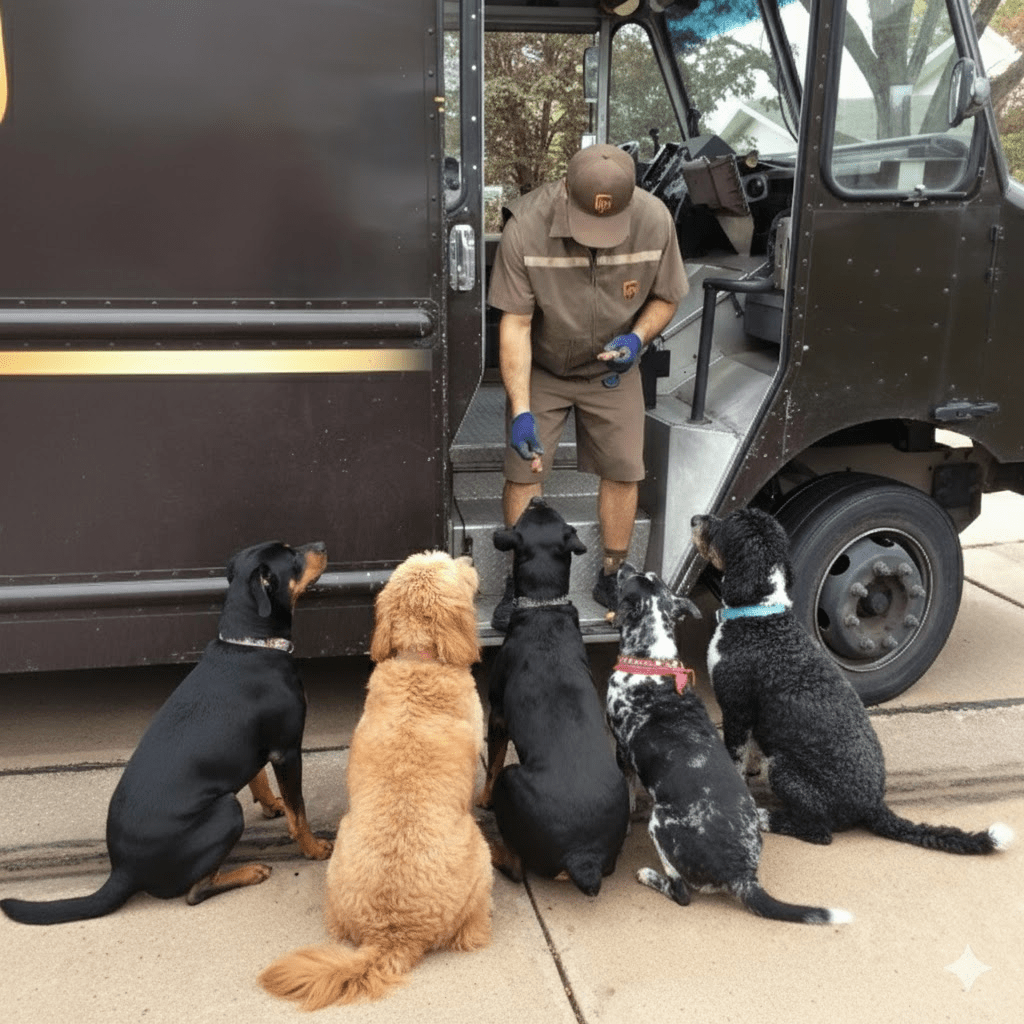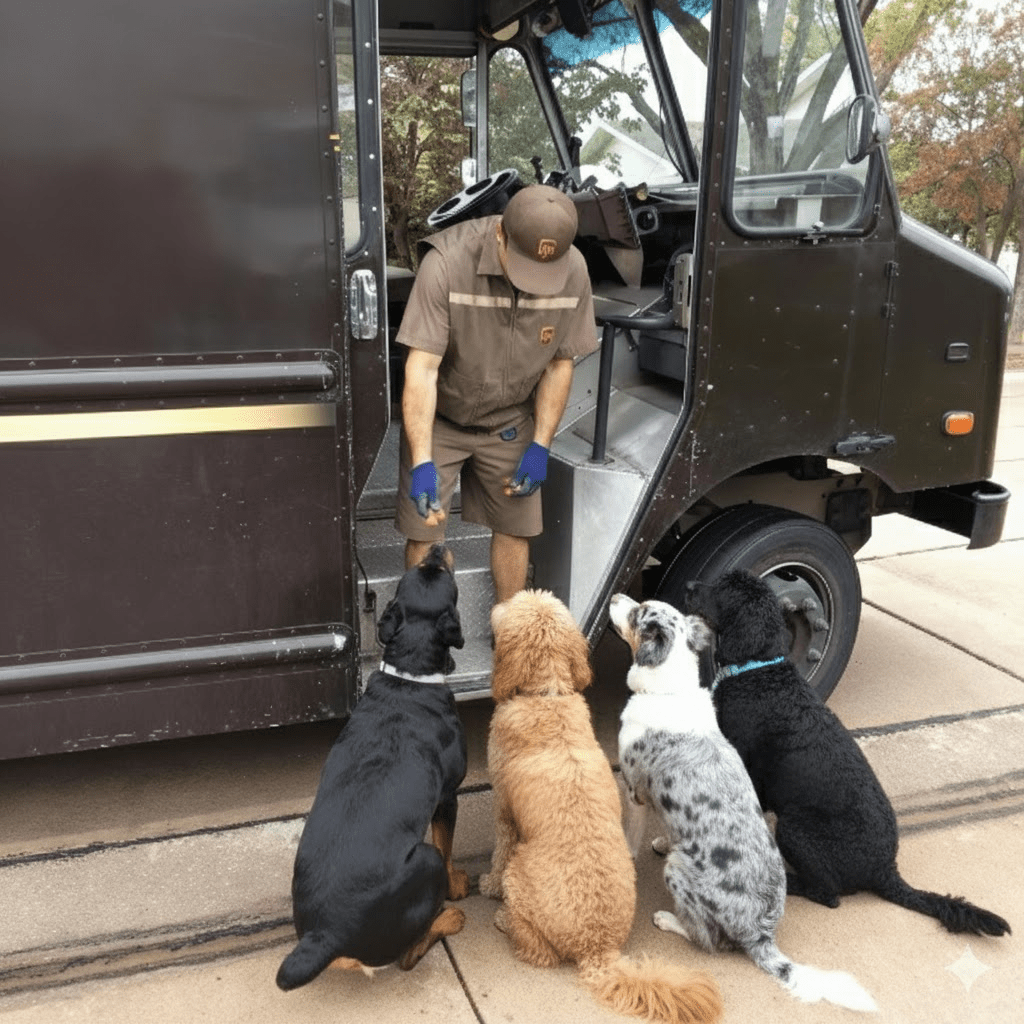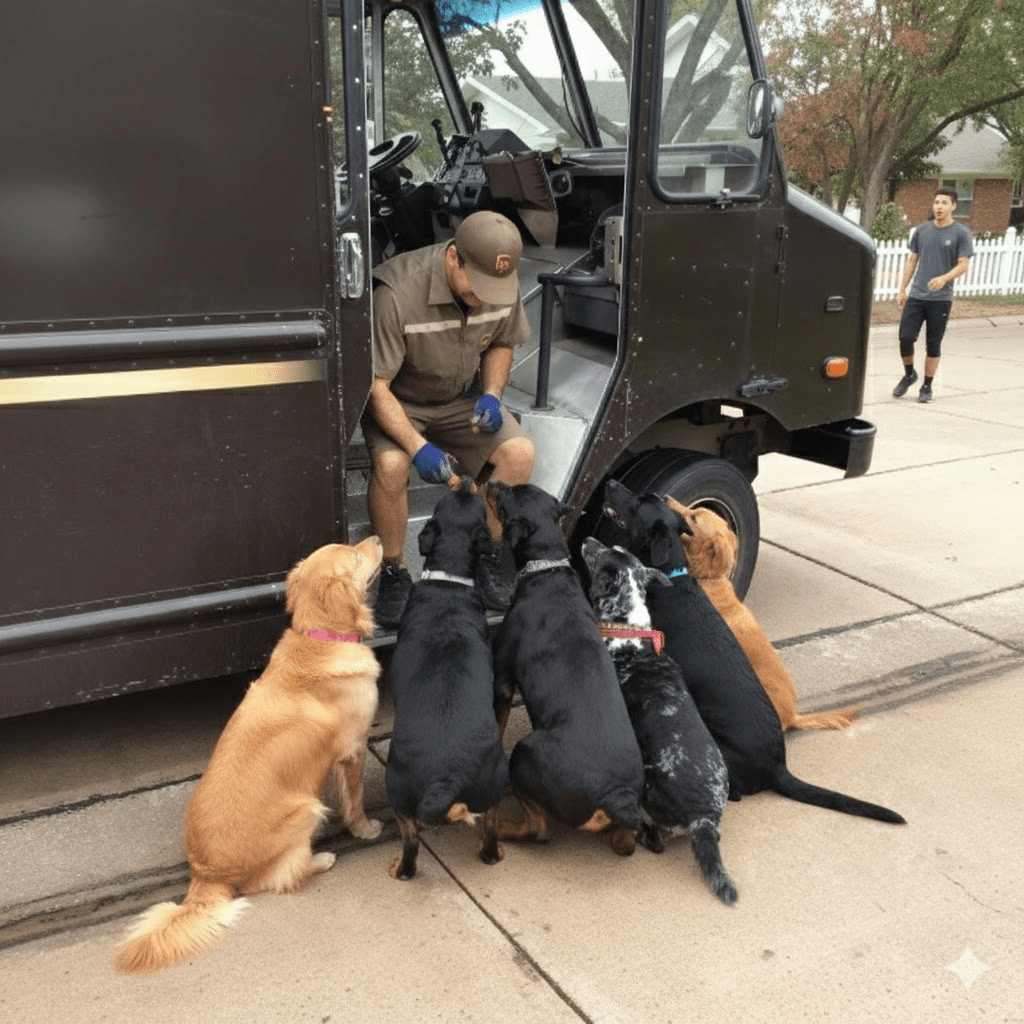In a world increasingly driven by efficiency and the impersonal exchange of goods, a heartwarming phenomenon continues to unfold on routes across the globe, often unnoticed by the hurried pace of modern life. It’s a testament to the enduring power of connection, the unspoken language of friendship, and the surprising bonds that form between those who deliver and those who eagerly await their arrival. While the primary function of a package delivery driver is, undoubtedly, to transport items from sender to recipient, a closer look reveals that many of these dedicated individuals deliver something far more valuable: a moment of joy, a familiar face, and sometimes, even a treat. This delightful dynamic is perhaps most evident in the relationships forged between drivers and the four-legged residents on their routes. Far from being mere obstacles or barking nuisances, many dogs view the arrival of the delivery truck not with suspicion, but with genuine excitement, recognizing the uniform as a harbinger of not just packages, but also pats, kind words, and often, a delicious biscuit. This reciprocal affection transforms routine deliveries into cherished encounters, weaving a rich tapestry of community and compassion into the fabric of daily commerce. It speaks volumes about the capacity for kindness that exists even in the most functional of interactions, reminding us that every journey, no matter how practical, can be enriched by a little bit of heart.

The phenomenon of “UPS Dogs” (and indeed, “FedEx Furballs” or “Postal Pooches”) has gained significant traction online, with social media groups and hashtags dedicated to sharing endearing photos and videos of these interspecies friendships. These platforms serve as a digital testament to the widespread nature of this heartwarming trend, showcasing countless instances of drivers bending down to offer a treat, a scratch behind the ears, or a moment of playful interaction. It’s a powerful counter-narrative to the often-stressful perception of delivery work, revealing a softer, more personal side to the industry. The drivers, in turn, often speak of these encounters as highlights of their day, providing a much-needed mental break and a boost to their spirits amidst the demanding schedules and pressures of their job.

For many dogs, the routine of the delivery truck’s arrival becomes a highly anticipated event. Their acute sense of hearing often alerts them to the approaching vehicle long before their human companions are aware, triggering a flurry of excitement. This anticipation is not simply about receiving a treat; it’s about the interaction itself. Dogs are highly social animals who thrive on routine and positive reinforcement. The friendly greeting from a familiar driver, combined with the sensory reward of a treat, reinforces a positive association with the uniform and the vehicle. This consistent, positive interaction can even help to alleviate anxiety in some dogs who might otherwise be wary of strangers or loud vehicles, transforming a potential stressor into a source of comfort and joy.

This symbiotic relationship extends beyond mere sentimentality; it can also have practical benefits. A dog that is accustomed to and friendly with the delivery driver is less likely to bark excessively or exhibit aggressive behavior, making deliveries smoother and safer for both the driver and the homeowner. In some cases, these established friendships can even aid in package security, as a happy, engaged dog might indirectly deter opportunistic thieves who prefer to operate unnoticed. The presence of a friendly, albeit vocal, canine welcoming the delivery person can act as an effective, natural deterrent, further enhancing the trust and efficiency of the delivery process.

These daily interactions also highlight the often-underestimated role of empathy and connection in professional settings. For drivers, these brief moments with friendly animals can serve as a powerful antidote to the isolation that can sometimes accompany long hours on the road. It provides a sense of community and personal connection that transcends the transactional nature of their work. These small acts of kindness foster a positive work environment, not just for the drivers themselves, but also for the broader perception of the company they represent. A driver who takes the time to acknowledge and interact positively with a household’s pets is often seen as more approachable, friendly, and reliable, enhancing customer satisfaction beyond the timely delivery of goods.







